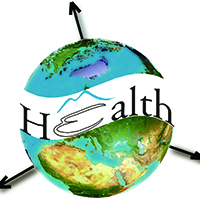Correction. Spatial cluster analysis of COVID-19 in Malaysia (Mar-Sep, 2020)

Published: 1 August 2023
Abstract Views: 702
Publisher's note
All claims expressed in this article are solely those of the authors and do not necessarily represent those of their affiliated organizations, or those of the publisher, the editors and the reviewers. Any product that may be evaluated in this article or claim that may be made by its manufacturer is not guaranteed or endorsed by the publisher.
All claims expressed in this article are solely those of the authors and do not necessarily represent those of their affiliated organizations, or those of the publisher, the editors and the reviewers. Any product that may be evaluated in this article or claim that may be made by its manufacturer is not guaranteed or endorsed by the publisher.
Similar Articles
- Sami Ullah, Hanita Daud, Sarat C. Dass, Habib Nawaz Khan, Alamgir Khalil, Detecting space-time disease clusters with arbitrary shapes and sizes using a co-clustering approach , Geospatial Health: Vol. 12 No. 2 (2017)
- Alice Nardoni Marteli, Laurindo Antonio Guasselli , Décio Diament , Gabriele Ozório Wink , Vitor Vieira Vasconcelos , Spatio-temporal analysis of leptospirosis in Brazil and its relationship with flooding , Geospatial Health: Vol. 17 No. 2 (2022)
- Kyungsoo Han, Sejin Park, Jürgen Symanzik, Sookhee Choi, Jeongyong Ahn, Trends in obesity at the national and local level among South Korean adolescents , Geospatial Health: Vol. 11 No. 2 (2016)
- Aizada A. Mukhanbetkaliyeva, Anar M. Kabzhanova, Ablaikhan S. Kadyrov, Yersyn Y. Mukhanbetkaliyev, Temirlan G. Bakishev, Aslan A. Bainiyazov, Rakhimtay B. Tleulessov, Fedor I. Korennoy, Andres M. Perez, Sarsenbay K. Abdrakhmanov, Application of modern spatio-temporal analysis technologies to identify and visualize patterns of rabies emergence among different animal species in Kazakhstan , Geospatial Health: Vol. 19 No. 2 (2024)
You may also start an advanced similarity search for this article.

 https://doi.org/10.4081/gh.2023.1233
https://doi.org/10.4081/gh.2023.1233





